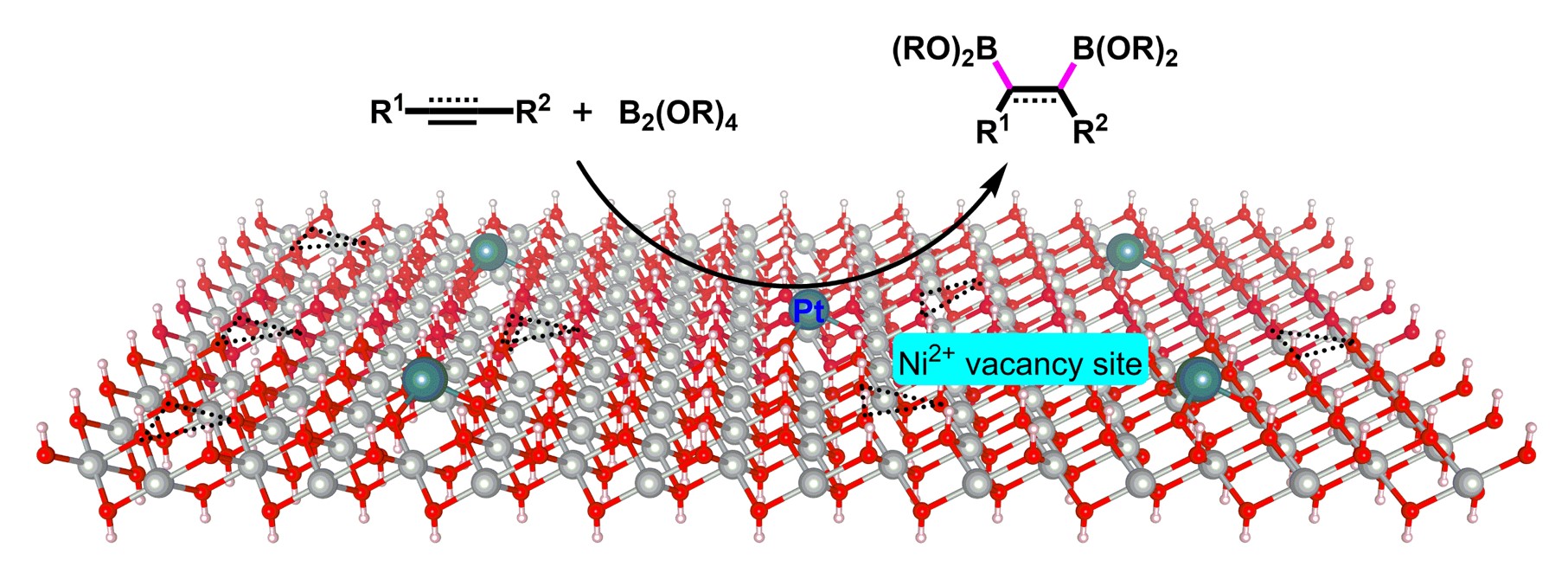
|
个人信息Personal Information
副教授
硕士生导师
电子邮箱:
所在单位:化学与材料工程学院
学历:博士研究生毕业
办公地点:温州大学A区数理学院3C407B室
学位:理学博士学位
毕业院校:清华大学
学科:无机化学
Jian Zhang+, Xi Wu+, Weng-Chon Cheong, Wenxing Chen, Rui Lin, Jia Li, Lirong Zheng, Wensheng Yan, Lin Gu, Chen Chen, Qing Peng, Dingsheng Wang*, Yadong Li*, Cation vacancy stabilization of single-atomic-site Pt1/Ni(OH)x catalyst for diboration of alkynes and alkenes
点击次数:

DOI码:10.1038/s41467-018-03380-z
发表刊物:Nature Communications
摘要:Development of single-atomic-site catalysts with high metal loading is highly desirable but proved to be very challenging. Although utilizing defects on supports to stabilize independent metal atoms has become a powerful method to fabricate single-atomic-site catalysts, little attention has been devoted to cation vacancy defects. Here we report a nickel hydroxide nanoboard with abundant Ni(2+) vacancy defects serving as the practical support to achieve a single-atomic-site Pt catalyst (Pt1/Ni(OH)x) containing Pt up to 2.3 wt% just by a simple wet impregnation method. The Ni(2+) vacancies are found to have strong stabilizing effect of single-atomic Pt species, which is determined by X-ray absorption spectrometry analyses and density functional theory calculations. This Pt1/Ni(OH)x catalyst shows a high catalytic efficiency in diboration of a variety of alkynes and alkenes, yielding an overall turnover frequency value upon reaction completion for phenylacetylene of ~3000 h(-1), which is much higher than other reported heterogeneous catalysts.
论文类型:期刊论文
学科门类:理学
文献类型:J
卷号:9
页面范围:1002
是否译文:否
发表时间:2018-03-10
收录刊物:SCI
发布期刊链接:https://www.nature.com/articles/s41467-018-03380-z
上一条:Weng-Chon Cheong+, Wenjuan Yang+, Jian Zhang+, Yang Li, Di Zhao, Shoujie Liu, Konglin Wu, Qinggang Liu, Chao Zhang, Dingsheng Wang, Qing Peng, Chen Chen*, Yadong Li*, Isolated Iron Single-Atomic Site-Catalyzed Chemoselective Transfer Hydrogenation of Nitroarenes to Arylamines
下一条:Qingquan Lu+, Jian Zhang+, Pan Peng, Guanghui Zhang, Zhiliang Huang, Hong Yi, Jeffrey T Miller, Aiwen Lei*, Operando X-ray absorption and EPR evidence for a single electron redox process in copper catalysis

